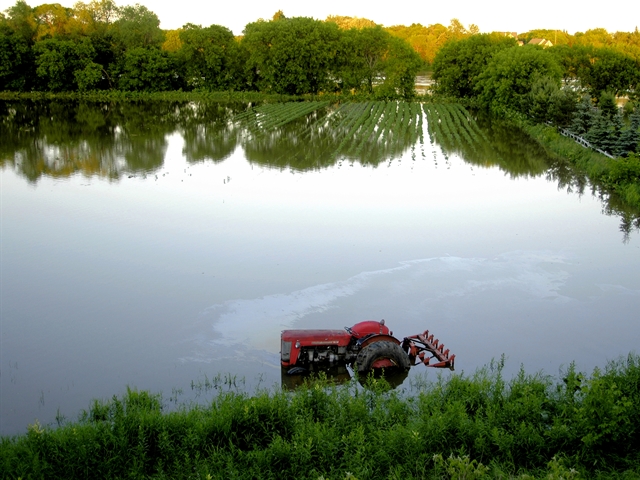Bright green grass across the fields, yards and roadsides of northern and central Georgia is making those parts of the state look more like Ireland than a typical Georgia in February. The cause—copious rain coupled with periods of much warmer than normal temperatures, which is waking up the plants early and causing them to green up. The National Phenological Network says that we are almost three weeks ahead of usual in signs of spring.
Rainfall across northern and central parts of Georgia has been much above normal, with some areas receiving more than 7 inches of rainfall so far in February. Parts of the northeast mountains have received almost a foot of rain this month, including some melted water from snow. With the average precipitation for the entire month of February ranging from about 4.5 inches in most areas to 6.5 inches in the mountains, that means February has already surpassed the monthly total at many locations.
Many stations are experiencing their top five wettest Februaries on record, including Athens (1st), Atlanta (3rd), Macon (4th), and Columbus (5th). These stations are also recording winter precipitation amounts that are in the top five highest. Athens is rated as highest ever, with Columbus, Augusta and Macon the 3rd wettest, and Atlanta the 5th wettest winter to date. This is likely to make the winter (November through February) one of the wettest on record for Georgia.
By comparison, parts of southern Georgia are fairly dry, with rainfall amounts of less than four inches along the Coastal Plains. The southeast coast has been the driest part of the state, with Savannah reporting 2.9 inches and Brunswick receiving only 1.64 inches for February so far. Abnormally dry conditions have persisted in this area through the winter with the storm track stuck farther to the north, although there is currently only a tiny area of designated drought in the state, according to the Drought Monitor.
Due to the heavy rain conditions, many streams are flooding, and standing water can be seen in many fields and ditches. Lake Lanier reached its highest level since 1964, and the UGA soil sensors at their Gainesville station near the shore are currently underwater as the lake has covered the ground beneath the station. Streams are overflowing their banks in many watersheds. A few small dams have been overtopped from all the rain in that region as well.
Moderate rain is expected for the next week, with the heaviest amounts falling southwestern Georgia, where it may be able to alleviate some of the dry conditions there.
In March, NOAA’s Climate Prediction Center is predicting that average temperatures will likely be colder than average, with wet conditions most likely in the southern half of Georgia. For the March through May period, temperatures are most likely to be warmer and wetter than usual.
